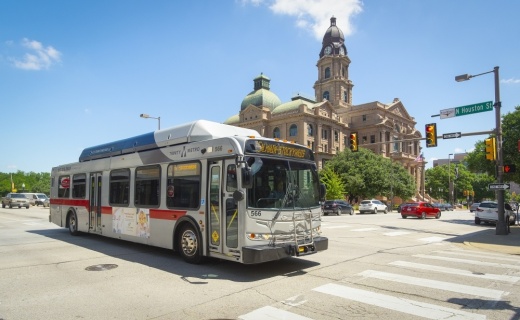The court voted 4-1 Nov. 2 not to redistrict, based on the previous finding that the existing boundaries—updated with data from the 2020 census—are sufficiently population-balanced by law and therefore do not need updating.
Commissioner Gary Fickes, who represents Precinct 3—which includes northeast Tarrant County— was the lone “no” vote.
The court received a presentation Sept. 28, which said the current lines—drawn in 2011—were in balance. Staff for Bickerstaff Heath Delgado Acosta LLP, which prepared the presentation, said there was a deviation of less than 2% between the population of the largest precinct and the smallest with the updated decennial census data.
As currently drawn, Precinct 2’s 532,325 people is the largest population of the four precincts, with Precinct 3’s 521,942 people representing the smallest of the four. According to G.K. Maenius, Tarrant County’s administrator, the rule of thumb for drawing district lines is that the deviation between the smallest and largest district be no larger than 10%.
The court still decided at the meeting in September to proceed with a public input process that included six public input sessions and two drawing sessions throughout the month of October. During that time, a total of 12 public input forms were received, according to county documents.
The decision Nov. 2 came after commissioners were presented with an alternative proposed map, commissioned by a group of citizens, which Maenius said county staff received Oct. 29. Several members of the group, which included former Texas House Representative Bill Zedler, spoke in favor of the map, which—as drawn—would have moved the residence of Precinct 1 Commissioner Roy Charles Brooks out of his district.
Brooks took issue with the map and said it would split minority communities within the county, further suggesting it violated the Voting Rights Act during a forceful rebuke.
“The fact is, that when [the map] got to us, it did not meet our requirements and therefore is not worthy of further consideration,” Brooks said.
County Judge Glen Whitley said that, while he thought there could be some tweaking warranted to the current map, the proposed map was “a step too far” in the ways in which it split certain cities, such as Arlington and Grand Prairie, among other issues.
“I would have been all for small tweaks that would have kept communities and cities together,” Whitley said. “I’m not going to vote for consideration of this—and by that I mean I’m going to vote for what we’ve got.”





